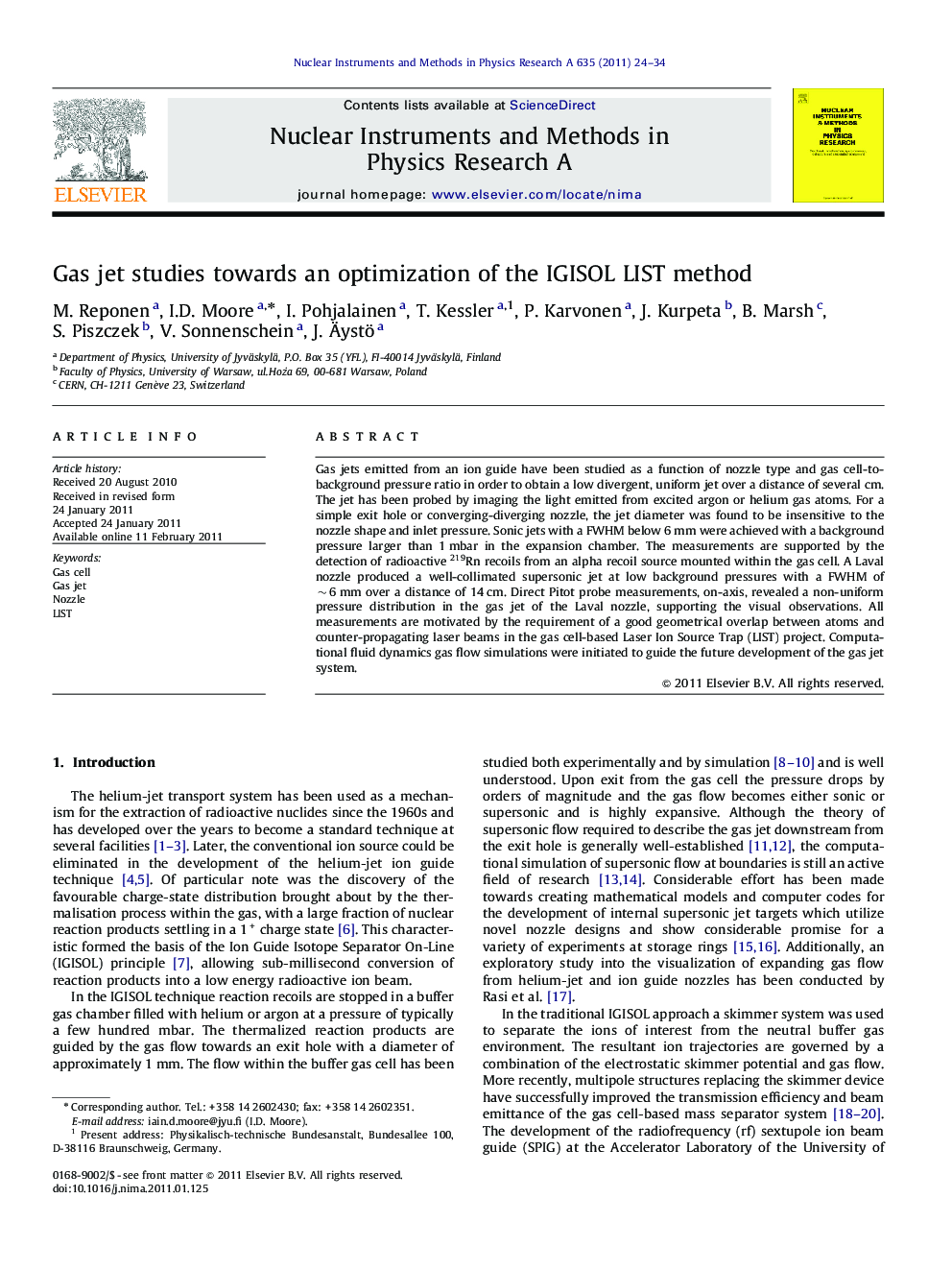| Article ID | Journal | Published Year | Pages | File Type |
|---|---|---|---|---|
| 1825439 | Nuclear Instruments and Methods in Physics Research Section A: Accelerators, Spectrometers, Detectors and Associated Equipment | 2011 | 11 Pages |
Gas jets emitted from an ion guide have been studied as a function of nozzle type and gas cell-to-background pressure ratio in order to obtain a low divergent, uniform jet over a distance of several cm. The jet has been probed by imaging the light emitted from excited argon or helium gas atoms. For a simple exit hole or converging-diverging nozzle, the jet diameter was found to be insensitive to the nozzle shape and inlet pressure. Sonic jets with a FWHM below 6 mm were achieved with a background pressure larger than 1 mbar in the expansion chamber. The measurements are supported by the detection of radioactive 219Rn219Rn recoils from an alpha recoil source mounted within the gas cell. A Laval nozzle produced a well-collimated supersonic jet at low background pressures with a FWHM of ∼6mm over a distance of 14 cm. Direct Pitot probe measurements, on-axis, revealed a non-uniform pressure distribution in the gas jet of the Laval nozzle, supporting the visual observations. All measurements are motivated by the requirement of a good geometrical overlap between atoms and counter-propagating laser beams in the gas cell-based Laser Ion Source Trap (LIST) project. Computational fluid dynamics gas flow simulations were initiated to guide the future development of the gas jet system.
